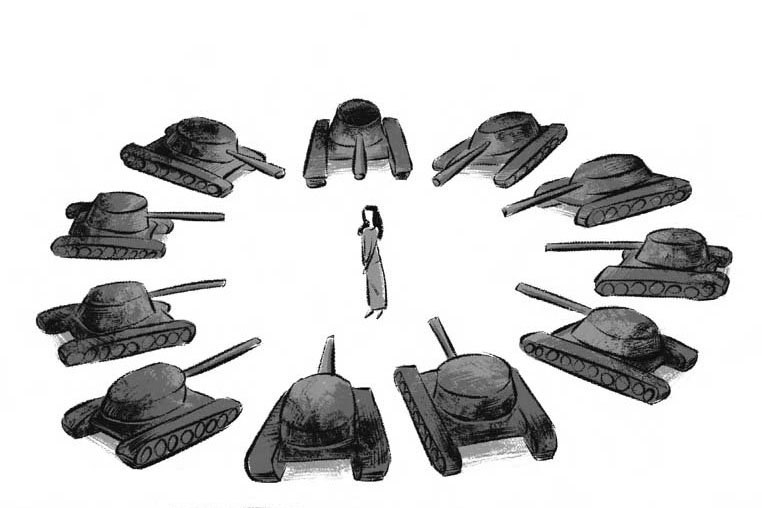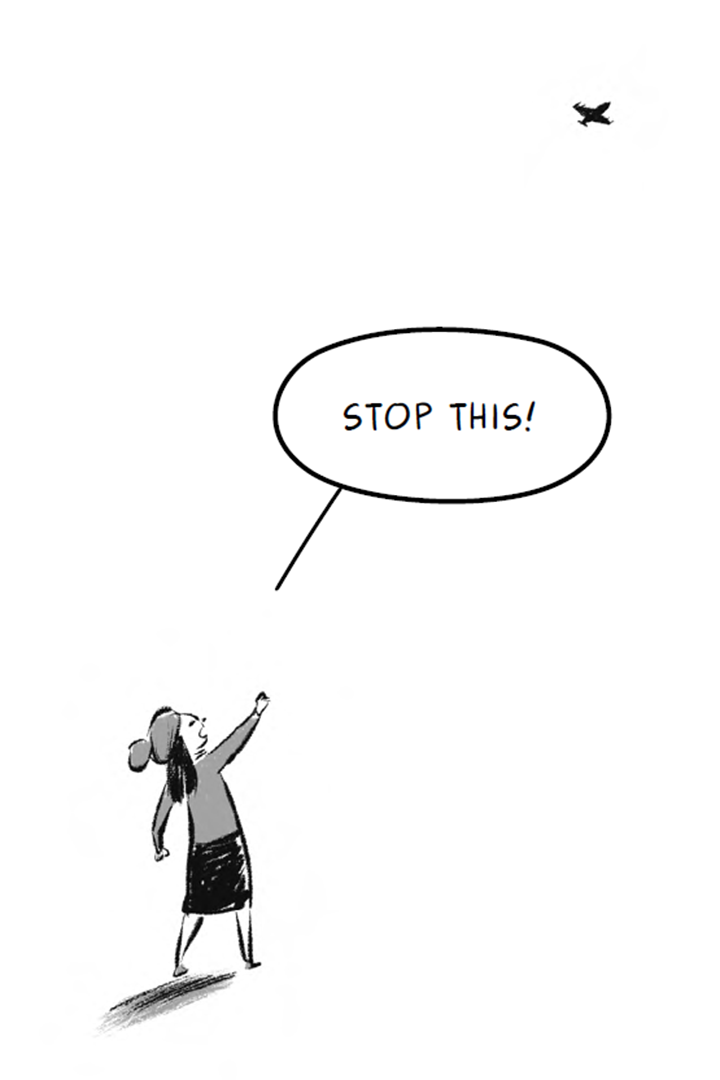On the morning of Feb. 24, 2022, Gregg Bucken-Knapp, Ph.D. ’99, woke to the reality that much of the world feared and anticipated: Russia had launched a full-scale invasion of Ukraine. A professor of public administration at the University of Gothenburg in Sweden, Bucken-Knapp immediately reached out to his friends and colleagues in Ukraine. In a flurry of texts and emails, he checked whether they were safe.
“If you wind up needing anything—tell me!” he wrote.
Over anxious hours, days and weeks, Bucken-Knapp slowly received replies. Some of his friends were making plans to leave the country, others were committed to staying put. Olga said she would volunteer for the Ukrainian army; Liliana was helping with humanitarian support; Nataliia and her son fled to the Romanian border crossing, only to be turned back; and Katerina, less than 10 miles from heavy bombing in Kyiv, said her sole goal was “to live through the air strike.”
Back in Gothenburg, Bucken-Knapp wrestled with worry and his own sense of powerlessness. “This is horrible, this should not be happening,” he recalled thinking. “I would give anything to do my bit to stop this.”
As the fighting wore on, Bucken-Knapp and his colleagues offered donations, transportation and housing. And as the messages continued to land in his in-box, he thought of a way to bring their stories to life—and bring the war home around the world.
Collaborating with artist Joonas Sildre, Bucken-Knapp transformed the texts and emails into a graphic nonfiction book titled “Messages from Ukraine” (University of Toronto Press, 2022). In illustrated vignettes, the book paints snapshots of the war’s impact on everyday people—from Tashiia huddling in a Kyiv basement shelter to Viktoria working at a refugee camp in Moldova. All proceeds from the book, which was named one of the 100 best books of 2022 by The Hill Times, are donated to relief efforts.
“The book stems from an awareness that we had one more thing we could do,” Bucken-Knapp explained. Their goal was “to keep a public spotlight on the war…to honor the millions who have faced hardships and made excruciating decisions.”
Sense from the senseless
Since earning his PhD in political science at the Columbian College of Arts and Sciences (CCAS), Bucken-Knapp, an expert in migration and integration, has often sought out the perspectives of refugees while integrating new research methods into migration dynamics.
In 2018, he convened a Gothenburg-based training module for young migration professionals, including several from Ukraine. Part of a government-funded program among Swedish universities called the Swedish Institute Academy for Young Professionals (SAYP), the group included scholars from, among other organizations, the United Nations Refugee Agency and the UN Children’s Fund. The group stayed close, collaborating on projects and meeting up for chats. “SAYP is a family,” Bucken-Knapp said. He and Sildre even discussed a graphic book on SAYP members’ migrant work experiences.
But all their plans changed on Feb. 24. As the Ukrainian SAYP alumni replied to his messages, Bucken-Knapp found himself with as many questions as answers. When Olga said she was volunteering for the army, for example, was she helping procure weapons—or firing them herself? “It’s a struggle to understand when you have not experienced a war yourself and you are distanced from this one,” he said. “I had friends and colleagues who were in incredibly vulnerable situations—but I didn’t know exactly what that meant.”
To some extent, Bucken-Knapp said, the book began as an attempt to make sense of the conflict and fill the gaps among his friends’ messages. Sildre’s illustrations are based on the authors’ interpretations of their plight—like drawings of Olga carrying a gun and Liliana bandaging a wound. In a way, Bucken-Knapp said, that format follows the research methods he honed at CCAS. “In my brand of social science, people provide us their interpretations of events—but we as researchers superimpose our own interpretations on top of that,” he explained. “I was living those research practices in real time.” Likewise, Bucken-Knapp champions comic books in social science to “access emotional knowledge” by graphically illustrating personal experiences.
Bucken-Knapp remains in touch with his Ukrainian colleagues and reports that all are safe. As a whole, he said, they are enthusiastic about the project and its prospect for keeping global attention on the war. Many offered editorial suggestions. Viktoriia, for example, was silent for weeks as she endured the siege of Mariupol. “The moment her message came through was an enormous relief,” Bucken-Knapp recalled. She relayed a story about cooking flatbread with children in an open yard during a lull in the shelling. When a Russian plane flew overhead, one little girl pointed to the sky and yelled, “Stop this!” The book ends with that image.
The authors are working on a follow-up book that takes place a year later. It details how their Ukraine colleagues marked the first anniversary of the war—from participating in commemorative events to taking time out for dinners with friends. Despite the toll of the last year, Bucken-Knapp sensed no weariness in any of his friends’ messages. “Quite the contrary,” he said. “They are committed to living active lives, to being emotionally open and to shedding a light on their resilience in the face of ongoing war.”








